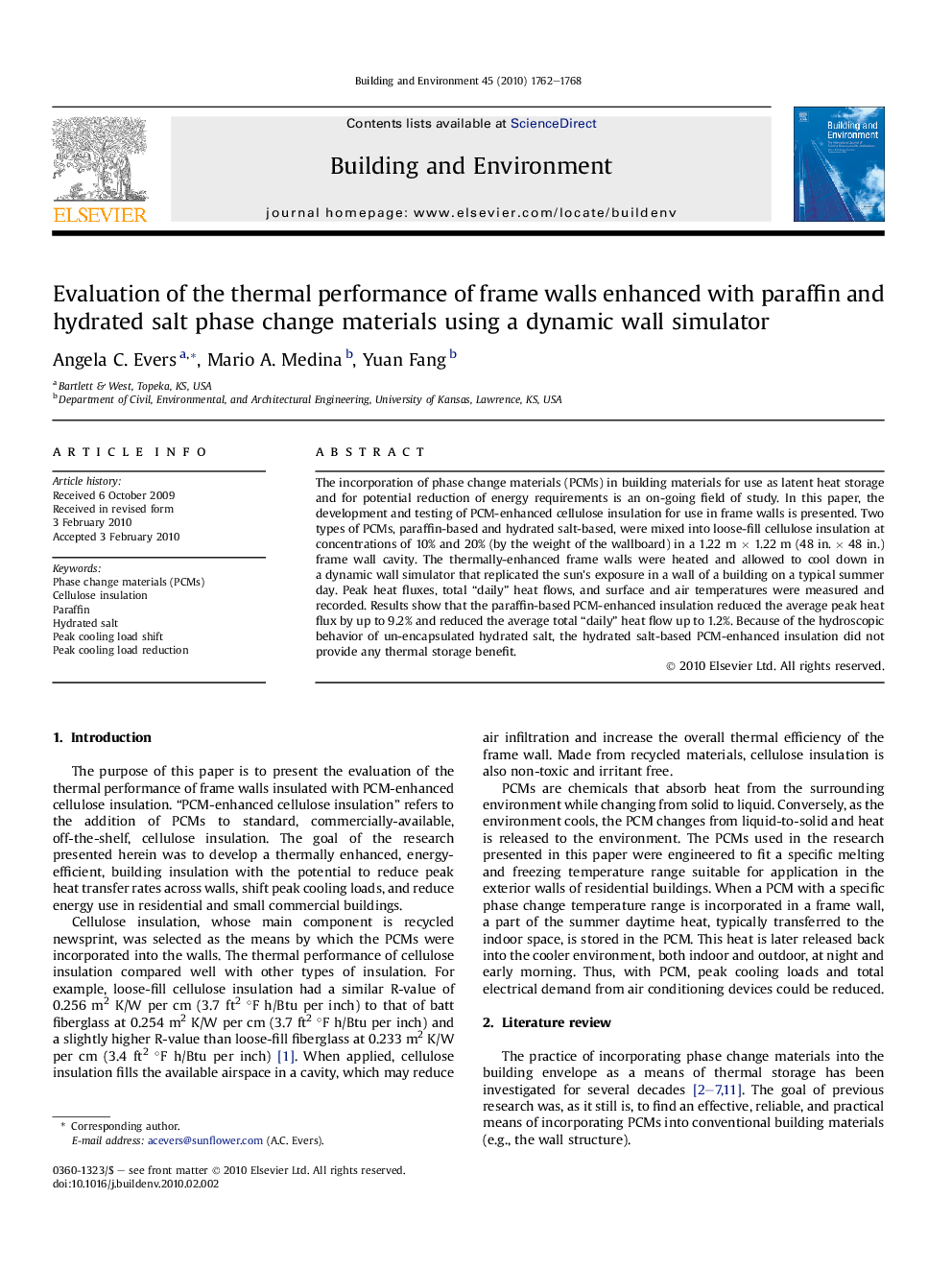| Article ID | Journal | Published Year | Pages | File Type |
|---|---|---|---|---|
| 249021 | Building and Environment | 2010 | 7 Pages |
The incorporation of phase change materials (PCMs) in building materials for use as latent heat storage and for potential reduction of energy requirements is an on-going field of study. In this paper, the development and testing of PCM-enhanced cellulose insulation for use in frame walls is presented. Two types of PCMs, paraffin-based and hydrated salt-based, were mixed into loose-fill cellulose insulation at concentrations of 10% and 20% (by the weight of the wallboard) in a 1.22 m × 1.22 m (48 in. × 48 in.) frame wall cavity. The thermally-enhanced frame walls were heated and allowed to cool down in a dynamic wall simulator that replicated the sun's exposure in a wall of a building on a typical summer day. Peak heat fluxes, total “daily” heat flows, and surface and air temperatures were measured and recorded. Results show that the paraffin-based PCM-enhanced insulation reduced the average peak heat flux by up to 9.2% and reduced the average total “daily” heat flow up to 1.2%. Because of the hydroscopic behavior of un-encapsulated hydrated salt, the hydrated salt-based PCM-enhanced insulation did not provide any thermal storage benefit.
